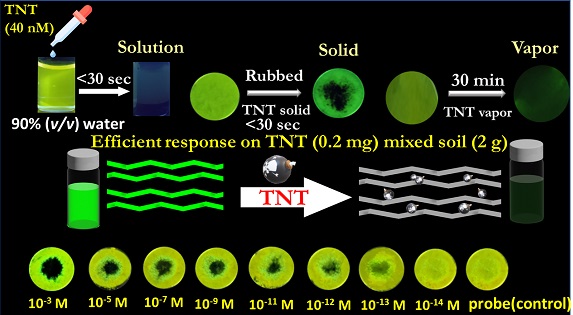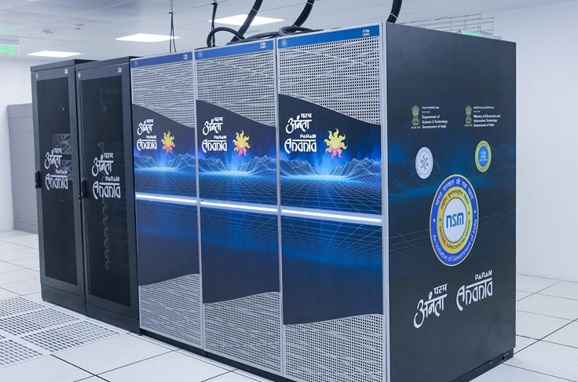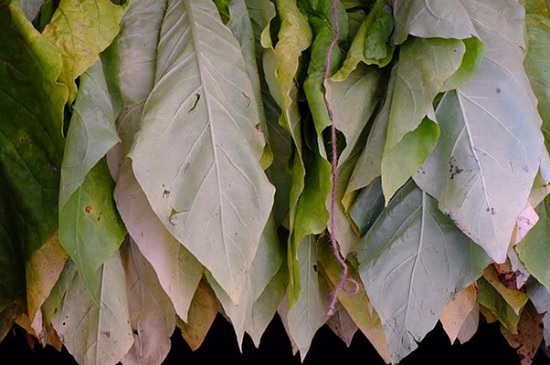
A team of researchers from the Birla Institute of Technology and Science – Pilani, Hyderabad campus, has synthesized two small fluorescent molecules (fluorophores) highly selective and sensitive to ultra-low levels of TNT. The solid fluorophores glow with a green-yellow colour under UV light; once they come in contact with traces of TNT (in solid/solution/vapour), the glow quenches (dims out). The study results show that the method can sense even minute traces of TNT as low as 15 parts per quadrillion (ppq, 15x10-15).
TNT (Trinitrotoluene) is a synthetic organic compound widely used for mining, industrial processes and military and security purposes. TNT is stable and safe to handle under ambient conditions. However, when detonated (generated pressure wave), the chemical bonds in TNT break, releasing enormous amounts of energy, toxic gases, and smoke to the surroundings.
The emitted particles readily mix with water, soil, and air and contaminate them. The pollutants not only pose severe health hazards for humans but are also harmful to biota. As a result, the US environment agency has mandated that the permissible TNT levels should not exceed 1ppb (parts per billion).
The conventional methods of detecting TNT are chromatographic, spectroscopic or optical techniques. In these methods, the sample is collected and tested in a laboratory using expensive equipment and limited to a solution state only. In addition, several polymeric fluorophores are also used to detect TNT.
“These methods are cumbersome and require experts to analyze the sample,” said Dr Manab Chakravarty, principal investigator of the study, while speaking to India Science Wire. “Synthesis and characterization of the emitting polymers are challenging, and they are not highly selective to TNT. As a result, the process is expensive with low reproducibility. Moreover, the detecting agents are in liquid form and unwieldy to carry. In contrast, few other methods use expensive nanoparticles (like gold) for detection,” he added.
A team of researchers from the Birla Institute of Technology and Science – Pilani, Hyderabad campus, has synthesized two small fluorescent molecules (fluorophores) highly selective and sensitive to ultra-low levels of TNT. The solid fluorophores glow with a green-yellow colour under UV light; once they come in contact with traces of TNT (in solid/solution/vapour), the glow quenches (dims out). The study results show that the method can sense even minute traces of TNT as low as 15 parts per quadrillion (ppq, 15x10-15).
Fluorescence-based techniques are gaining popularity as they are highly efficient in detecting TNT. The present study is also a fluorescent technique, with a simple colour-based identification of TNT levels done with the help of a commercially available 365 nm handy UV (ultraviolet) torch. Moreover, the detector is portable as the fluorescent molecules are primarily coated or dispersed on filter paper for on-spot detection. In addition, the device is simple and does not need experts, liquid reagents, or heavy/expensive equipment to detect TNT.
The fluorophores are labelled as CBZπTMB and TMBπCBZ and are sensitive to detect even 15 ppq of the explosive. “The molecular packing, interlayer distances and sufficient void space within the crystal lattice of the fluorophores are responsible for the high sensitivity and selectivity of the molecules,” explained Dr Chakravarty.
The researchers employed an inexpensive, metal-free process to synthesize fluorophores at room temperature. They claim that their lab is equipped to produce gram-scale quantities of the fluorophores.
The fluorophores are dissolved in an organic solvent (acetonitrile), and water is added to the solution. The researchers observed that adding water enhanced the fluorescence (glow) of the molecules. The combination has 70-90% v/v water. They then dipped filter paper in this solution mix; it absorbs the solution, trapping the fluorophores in the paper’s cellulose fibres. On drying, water and acetonitrile evaporate, leaving behind the fluorophore on the filter paper. This dried paper is ready for on-spot detection. Alternately, the fluorophores can be dispersed on the paper by pressing for quick on-spot detection.
When UV light is shone on the paper, the fluorophores absorb the radiation, switch to an excited energy state, and return to their original relaxed state by emitting fluorescence. However, the fluorescence is quenched when the fluorophore-laden filter paper is exposed to TNT molecules in nanomolar concentrations. “In the presence of TNT, the excited fluorophores transfer the electrons to TNT molecules, quenching the emission (seen as green glow turning dark),” said Dr Chakravarty.
The researchers conducted validation tests to verify the device’s performance and provide a range of the TNT levels in the sample. When the TNT concentration is high, the paper turns dark (black), and the darkness is gradually reduced when the concentration of TNT is decreased. The authors claim that the changes from green glow to black are detectable visually till the 15 ppq level.
“We further improved the robustness of the device by coating the fluorophores on typical polymeric materials,” said Dr Chakravarty.
The research team comprised Madhuparna Chakraborty, Banchhanidhi Prusti and Manab Chakravarty from the Department of Chemistry, BITS-Pilani, Hyderabad. The study was published in the journal ACS Applied Electronic Materials.
India Science Wire
ISW/SS/BP/TNT/04/07/2022





